Are you searching for a charming companion that can fit in your pocket? Look no further than the delightful Pocket Beagle. This petite breed possesses a plethora of appealing traits, from their affectionate nature to their adaptability in apartment living.
But there's more to uncover about these fascinating dogs. So, let's embark on a journey to explore the captivating world of Pocket Beagles, where you'll discover intriguing information, stunning pictures, unique characteristics, and fascinating facts about this remarkable breed.
Get ready to be captivated by the charm of these pint-sized pups!
Key Takeaways
- Pocket Beagles are a smaller version of the standard Beagle breed, with a potential Terrier influence.
- They are suitable for apartment living due to their quiet and low-energy nature, as well as their polite behavior towards neighbors.
- Pocket Beagles are affectionate and make great companions for both adults and children, offering comfort and support.
- Socialization is important for Pocket Beagles to ensure they are friendly and get along well with other dogs.
General Information
When it comes to general information about Pocket Beagles, there are a few key points to keep in mind.
Pocket Beagles are a miniature version of the standard Beagle, likely with some Terrier influence. They're small in size, standing between 7 to 12 inches tall and weighing between 7 to 15 pounds. While they aren't recognized by major kennel clubs, they're considered a Beagle variety.
Pocket Beagles have a lifespan of 10 to 15 years and have a short, smooth coat. They come in colors similar to Beagles, such as black and white, tan and white, and tricolor.
It's important to be aware that Pocket Beagles may be prone to ear infections, intervertebral disc disease, and eye problems. Therefore, it's crucial to adopt from rescue organizations or reputable breeders to ensure the health and well-being of these dogs.
Origin and Size
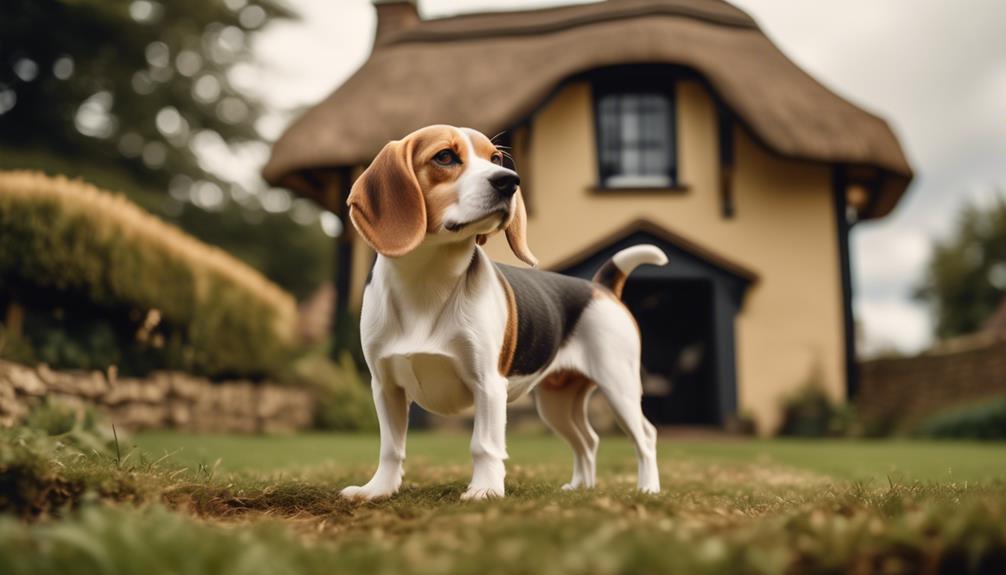
How did Pocket Beagles come to be and what's their size?
Pocket Beagles are a miniature version of the standard Beagle, likely with some Terrier influence. They were developed to be smaller in size while still retaining the characteristics of the Beagle breed.
Pocket Beagles typically stand 7-12 inches tall and weigh between 7-15 pounds. They're considered small dogs and aren't recognized as a separate breed by major kennel clubs, but rather as a variety of Beagles.
Despite their smaller size, Pocket Beagles still possess the same traits as their larger counterparts, including their friendly nature and love for companionship.
Breed Group and Lifespan

Pocket Beagles belong to the breed group of Beagles and have a lifespan of 10-15 years. Although not recognized by major kennel clubs, they're considered a Beagle variety.
These adorable dogs are known for their small size, standing at 7-12 inches tall and weighing 7-15 pounds. With their short, smooth coats, Pocket Beagles come in colors similar to Beagles, including black and white, tan and white, and tricolor.
It's important to note that Pocket Beagles may be prone to certain health issues, such as ear infections, intervertebral disc disease, and eye problems. However, with proper care and regular check-ups, they can live a happy and healthy life for many years.
Coat and Potential Health Issues
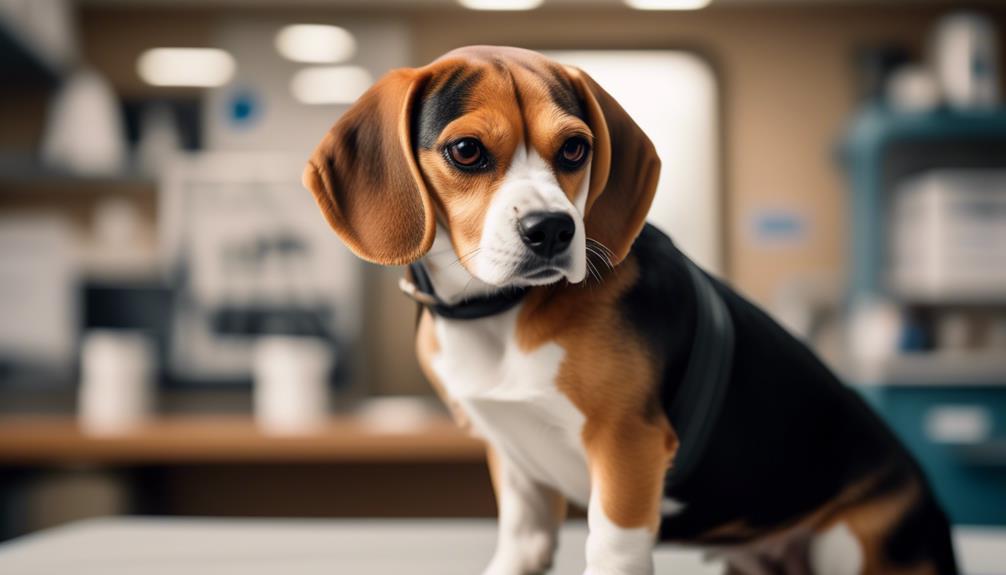
Pocket Beagles have a short, smooth coat and may be susceptible to potential health issues. It is important to be aware of these issues when considering this breed. Here is a table outlining some common health concerns that can affect Pocket Beagles:
| Health Issue | Description |
|---|---|
| Ear infections | Pocket Beagles have long, floppy ears that can trap moisture and lead to infections. Regular cleaning and ear care are essential. |
| Intervertebral disc disease | This condition affects the discs between the vertebrae of the spine, causing pain and mobility issues. It may require medical intervention. |
| Eye problems | Pocket Beagles can be prone to various eye conditions, including cherry eye and cataracts. Regular eye examinations are recommended to detect and treat these issues early. |
Adoption and Breeder Considerations

When considering adoption or finding a reputable breeder, it's important to prioritize the health and well-being of the Pocket Beagle. Here are some key considerations to keep in mind:
- Research and Background Check: Take the time to research and gather information about rescue organizations or breeders. Look for reviews, testimonials, and any red flags that might indicate potential issues.
- Health Screening: Ensure that the breeder conducts health screenings and genetic testing to minimize the risk of hereditary health problems in the puppies.
- Ethical Practices: Choose a breeder who follows ethical breeding practices, such as responsible breeding, proper socialization, and appropriate care for the puppies.
- Meet the Dogs: Whenever possible, meet the dogs in person to assess their temperament, health, and living conditions.
Suitability for Apartment Living
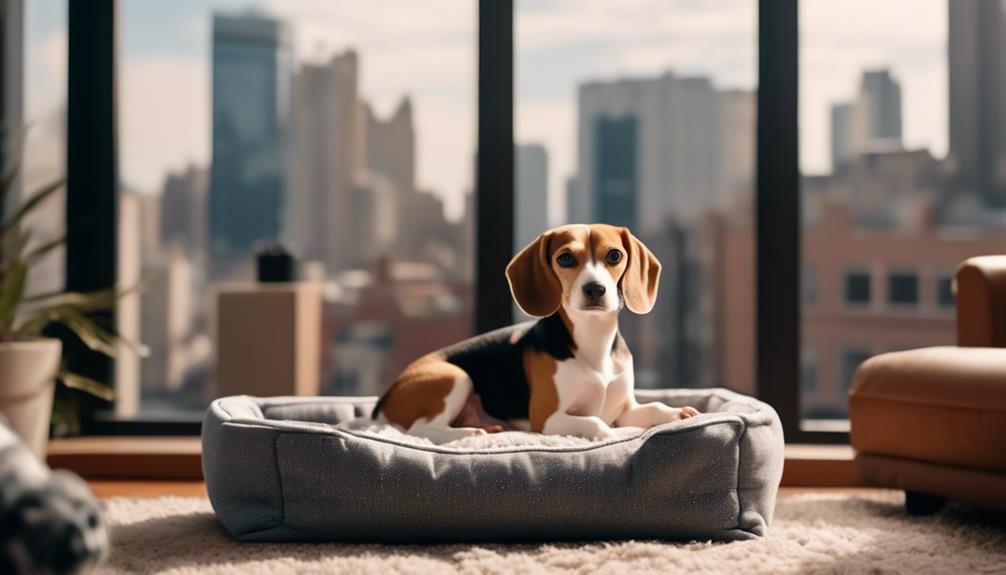
If you're considering adopting or buying a Pocket Beagle, it's important to evaluate their suitability for apartment living. These dogs adapt well to apartment living due to their quiet and low-energy nature. They're polite and well-behaved towards other residents, making them suitable for apartment environments.
When choosing a dog for an apartment, factors such as size, energy levels, and behavior towards neighbors should be considered. Pocket Beagles, with their small size and calm demeanor, are well-suited for apartment living. They're also a good choice for novice owners who may be new to dog ownership.
Qualities in an Apartment Dog
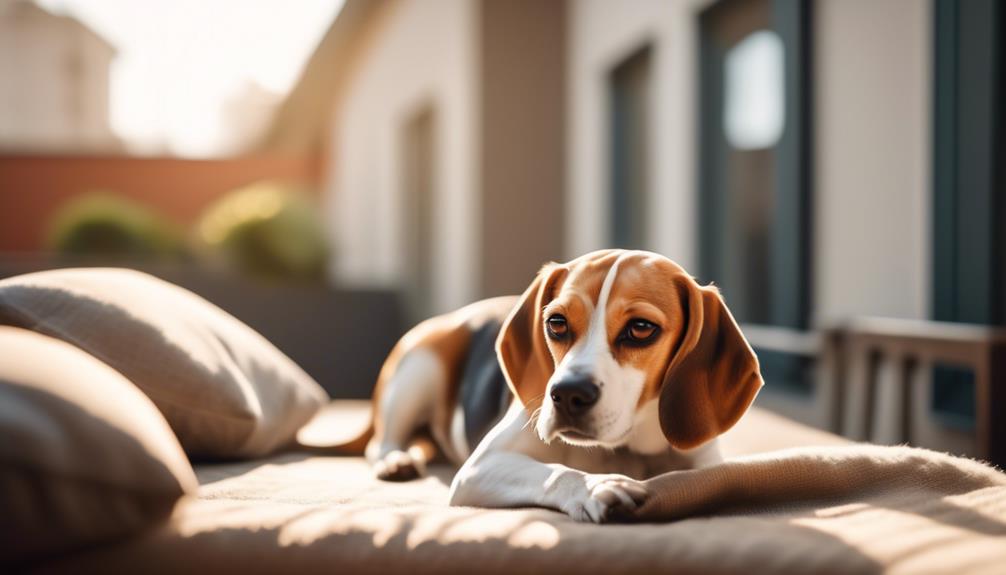
Apartment dogs should possess certain qualities to thrive in a confined living space. When choosing a dog for an apartment, there are a few key factors to consider. Here are four important qualities to look for in an apartment dog:
- Quiet: A dog that doesn't bark excessively will be much more suitable for apartment living, as excessive noise can disturb neighbors.
- Low-energy: Dogs with lower energy levels will adapt better to the limited space and lack of a large backyard for exercise.
- Polite behavior towards other residents: It's important for an apartment dog to be well-behaved and respectful towards neighbors and other residents in shared spaces.
- Good for novice owners: For those new to dog ownership, an apartment dog that's easy to train and has a more laid-back temperament can be a better fit.
Factors to Consider for Apartment Living
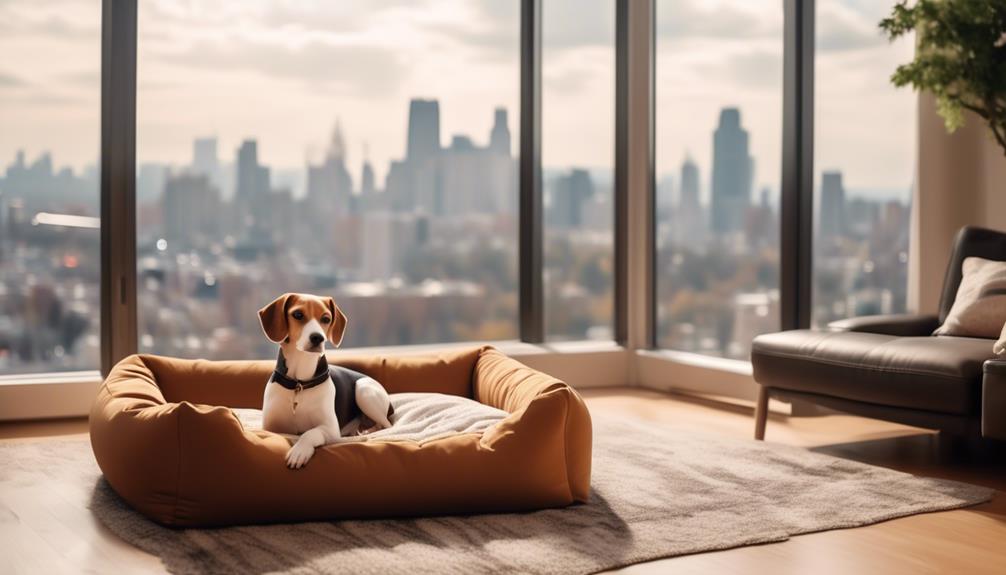
Considering the limited space and shared living environment, it's important to carefully evaluate certain factors when choosing a dog for apartment living. Here are some key factors to consider:
| Factors to Consider | Description |
|---|---|
| Size | Opt for a small or medium-sized dog that can comfortably navigate the space. |
| Energy Levels | Look for a dog with low to moderate energy levels to ensure they can adapt to apartment living without feeling cooped up. |
| Behavior Towards Neighbors | Choose a dog with a friendly and polite demeanor towards neighbors to avoid any disturbances or conflicts. |
| Exercise Needs | Select a breed with moderate exercise requirements to ensure you can provide adequate physical activity within the limited space. |
| Noise Level | Consider a dog that is not prone to excessive barking or howling to maintain peace in the apartment building. |
Dogs Not Well Suited for Apartments

To ensure a harmonious living environment in an apartment, it's important to be aware of dog breeds that may not be well suited for this type of living situation. Some breeds aren't ideal for apartments due to their size, energy levels, and behavior towards neighbors.
Here are four types of dogs that may not thrive in an apartment setting:
- Large and active breeds: Dogs like Labrador Retrievers and Border Collies require ample space to run and play.
- High-energy breeds: Breeds such as Australian Shepherds and Jack Russell Terriers need plenty of exercise and mental stimulation.
- Heavy barkers: Certain breeds, like Beagles and Dachshunds, tend to bark more frequently, which can disturb neighbors.
- Dogs prone to separation anxiety: Breeds like German Shepherds and Maltese may struggle with being alone for long periods and can become anxious or destructive.
It's important to consider these factors when choosing a dog for apartment living to ensure a happy and peaceful environment for both you and your neighbors.
Friendliness and Compatibility With Families and Other Dogs
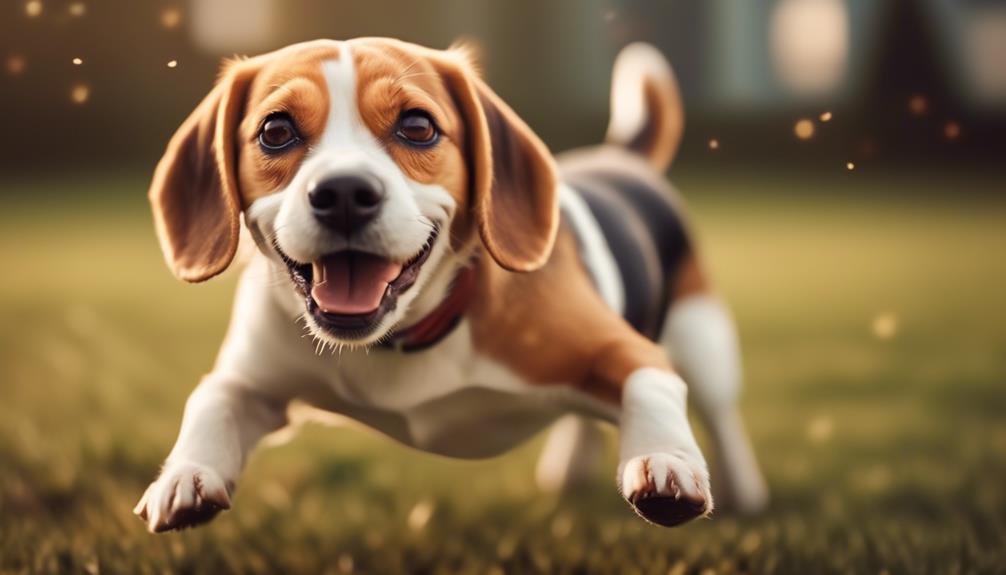
Dogs that are friendly and compatible with families and other dogs can bring joy and companionship to your household. They are affectionate and loyal companions, extending their affection to both adults and children. Dogs have the ability to sense their owners' emotions and offer comfort and support. However, it is important to note that friendliness towards dogs and humans are different traits. Early socialization plays a significant role in a dog's interaction with other canines. Some breeds are naturally more pack-oriented and enjoy the company of other dogs. Socialization is key to helping a dog become friendly with other dogs. When considering a dog for your family, it is essential to evaluate their compatibility with children and other dogs. Meeting and interacting with a dog in person is the best way to gauge their affectionate nature. The table below provides a summary of factors to consider when assessing a dog's friendliness and compatibility.
| Factors to Consider | Description |
|---|---|
| Temperament | Assess the dog's overall personality and disposition. |
| Breed Characteristics | Research specific breed traits and tendencies. |
| Socialization | Evaluate the dog's exposure to different environments and other dogs. |
| Energy Level | Consider the dog's activity requirements and compatibility with your lifestyle. |
| Previous Experience | Learn about the dog's history and past interactions with families and other dogs. |
Grooming, Exercise, and Behavioral Needs
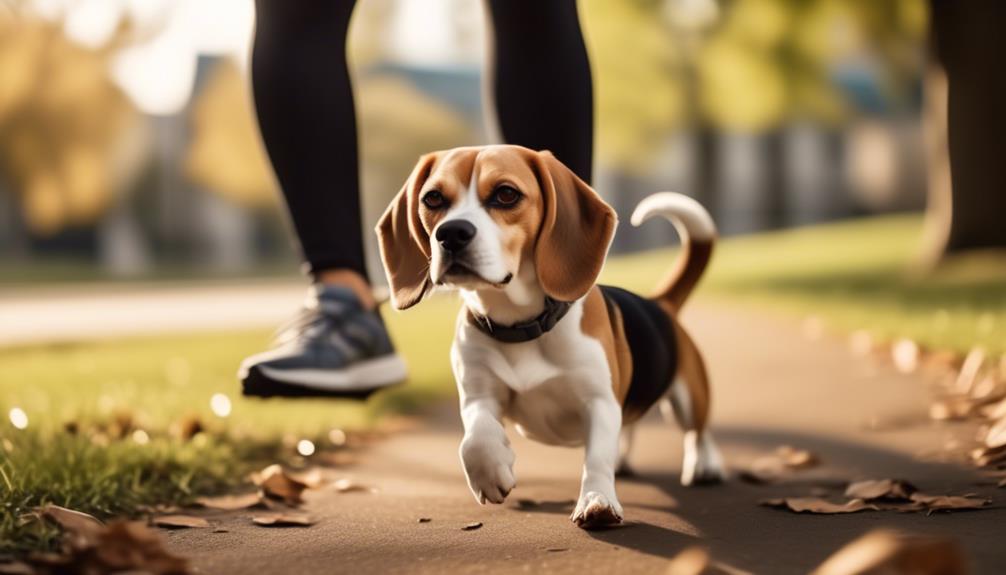
When caring for a Pocket Beagle, it's important to understand their grooming, exercise, and behavioral needs. Here are some key points to keep in mind:
- Grooming: Pocket Beagles have a short, smooth coat that requires regular brushing to keep it healthy and free from mats. Bathing should be done as needed to keep them clean. Additionally, regular ear cleaning and nail trimming are essential for their overall hygiene.
- Exercise: Although small in size, Pocket Beagles have moderate exercise needs. Daily walks, playtime, and mental stimulation are necessary to keep them physically and mentally stimulated. They enjoy activities such as fetch, puzzle toys, and obedience training.
- Behavioral Needs: Pocket Beagles are social and thrive on human companionship. They may exhibit separation anxiety if left alone for long periods. Positive reinforcement training methods work best with these dogs, as they respond well to praise and rewards. Early socialization is crucial to ensure they grow up to be well-rounded and well-behaved dogs.
Frequently Asked Questions
Are Pocket Beagles Hypoallergenic?
No, pocket beagles are not hypoallergenic. They have a short, smooth coat that sheds moderately. If you have allergies, it's best to spend time with a pocket beagle before bringing one into your home.
How Often Should Pocket Beagles Be Groomed?
You should groom your pocket Beagle regularly to keep their coat healthy and clean. Brushing them once or twice a week, along with occasional baths, should be sufficient to maintain their grooming needs.
Are Pocket Beagles Prone to Separation Anxiety?
Yes, Pocket Beagles are prone to separation anxiety. They form strong bonds with their owners and can become anxious when left alone for long periods. Proper training and providing mental stimulation can help alleviate this.
Do Pocket Beagles Require a Lot of Exercise?
No, pocket beagles do not require a lot of exercise. They have low energy levels and can adapt well to apartment living. However, regular walks and playtime are still important for their overall health and well-being.
Can Pocket Beagles Be Trained to Be Off-Leash?
Yes, pocket beagles can be trained to be off-leash, but it requires consistent training, patience, and a secure environment. Start with basic obedience commands and gradually increase the level of distraction.
What Are the Differences Between Pocket Beagles and Otterhounds as Dog Breeds?
When comparing otterhound breed information characteristics to those of pocket beagles, the differences are quite distinct. Otterhounds are large and strong with a keen sense of smell, while pocket beagles are small and compact with a characteristic howl. Both breeds have their unique qualities for potential dog owners to consider.
Conclusion
In conclusion, if you're looking for a small, affectionate companion, the Pocket Beagle could be the perfect breed for you. These miniature versions of Beagles are known for their loyalty and affection towards their owners.
While they may have some health issues to be aware of, they can adapt well to apartment living and are great additions to family households. With proper grooming, exercise, and socialization, Pocket Beagles can bring joy and love to your life.




